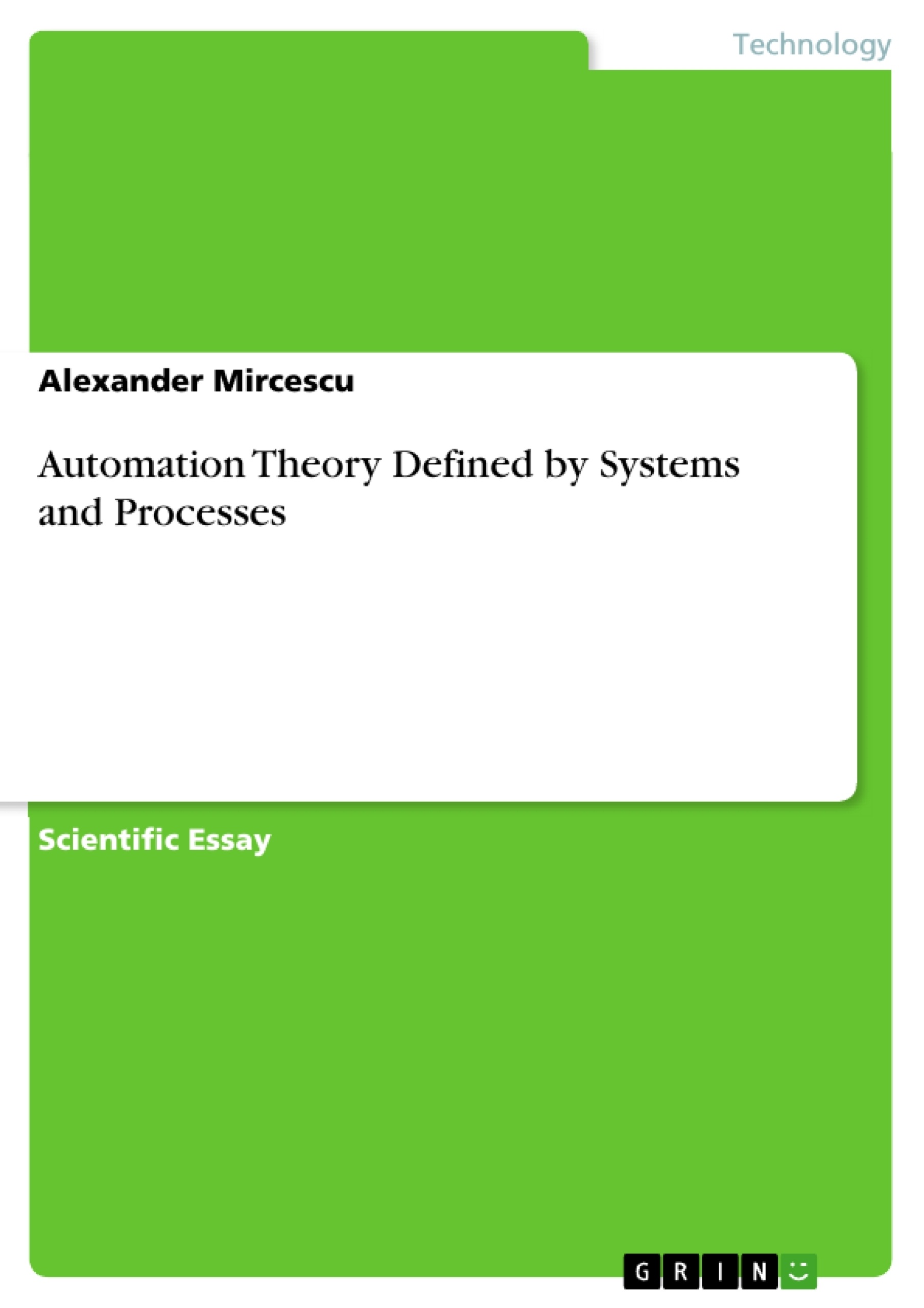Automation systems are the most general systems known in engineering, since they couple the management of matter, energy, and information in space, time, and causality. Indeed, such systems define entire production processes where materials and processed, transported, and stored. The production processes of materials require (mostly electrical) energy needed for the operating machines, such that energy has also to be transformed, transported, and stored. The machines are controlled by computers, such that information flows are also present, implying that information has also to be processed, communicated among the operating machines, and stored.
In order to formalize the description of such automation processes we will define a system and a process in a deductive manner in this chapter. This definition will appear astonishing at this step, but will be clarified in the following chapters explaining what information and causality are, and how they behave in physics together with matter, energy, space, and time.
Frequently asked questions
What is the definition of a "System" in this context?
A system is defined as a ten-dimensional vector consisting of three dimensions of space (x, y, z), three complementary dimensions of space given by the overall momenta (px, py, pz), one dimension of time (t), one complementary dimension of time given by the energy (E), one dimension of causality (C), and one complementary dimension of causality given by the information (I).
What is the definition of a "Process" in this context?
A process is a nine-dimensional entity consisting of a 3x3 matrix, where each element of the matrix defines one dimension.
How are matter, energy, and information related in automation systems?
Automation systems operate on matter, energy, and information. Matter is defined by momenta derived from forces and angular momenta derived from torques. Energy is defined by integrating forces and torques in time. Information is defined by integrating the force in space and time, the torque in the angle and time, momentum in space, angular momentum in angle, or energy in time.
What are the fundamental principles governing automation systems?
The fundamental principles are the conservation of momentum, angular momentum, energy, and information within a closed system. These are related to Newton's laws of motion and define how matter, energy, and information are conserved during interactions.
How is information defined physically in this context?
Information is defined as the integral of energy over time, which is equivalent to integrating force in space and time, or torque in angle and time. Unlike force, momentum, angular momentum, or energy, information is a scalar and is neither dependent on space nor time. The units of information are equivalent to the units of the Planck constant.
What is the role of universal constants in automation systems?
The gravitational constant (G), the speed of light in vacuum (c), and the Planck constant (h) are important for defining relationships between force, matter, energy, and information. These constants define fundamental equations such as the matter equation, the energy equation, and the information equation.
How are Petri nets used in the description of automation systems?
Petri nets are used to represent the causal relationships between information pieces within an automation system. Places (circles) represent the state of a system and can be identified with information, while transitions (rectangles) represent the causal relationships between these information pieces.
What is the significance of measurement in automation systems, and how does it relate to the laws of conservation?
Measurement can disturb the system being measured, affecting energy and momentum. The laws of conservation of energy, momentum, and angular momentum lead to the law of conservation of information. No information is lost during a measurement.
How do reference frames affect measurements within automation systems?
According to Einstein's special theory of relativity, reference frames of particles and observers are connected by Lorentz transformations. Space, time, momentum, angular momentum, and energy are transformed between reference frames. Information is an invariant, meaning it is the same across all reference frames connected by a Lorentz transformation.
How is information used in the design and control of automation systems?
Information can be defined physically to couple to automation theory, and generalized spacetime translates substance, allowing us to find the behaviour of the system, and distribute it to the appropriate resources.
- Quote paper
- Dr. Alexander Mircescu (Author), 2017, Automation Theory Defined by Systems and Processes, Munich, GRIN Verlag, https://www.grin.com/document/351220




